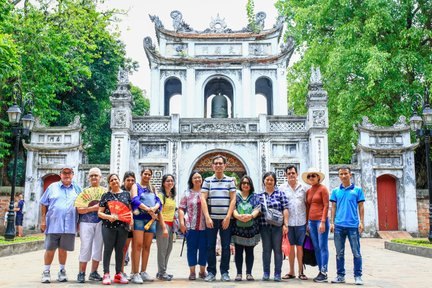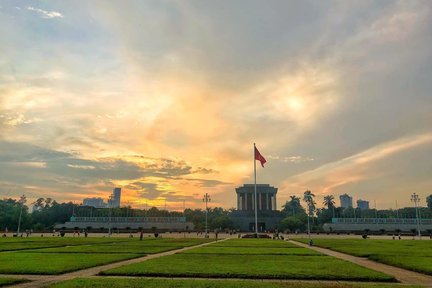Thang Long Citadel
The best of Thang Long Citadel
Bucket-list experiences
Make it a getaway
Trouble-free transport
More to explore
Why people love Thang Long Citadel
Nearby places to go
FAQs about Thang Long Citadel
When is the best time to visit the Imperial Citadel of Thang Long in Hanoi?
How can I get to the Imperial Citadel of Thang Long in Hanoi?
What local dishes should I try when visiting Hanoi?
What should I wear when visiting the Imperial Citadel of Thang Long?
What are the opening hours of the Imperial Citadel of Thang Long?
How much does it cost to visit the Imperial Citadel of Thang Long?
What to know before visiting Thang Long Citadel
Remarkable Landmarks and Must-Visit Sights
Đoan Môn
Discover the main gate to the palatial complex of Later Lê Emperors, known as Đoan Môn. This historic structure serves as the entrance to the Forbidden City and offers a glimpse into the grandeur of Vietnam's imperial history.
Kinh Thiên Palace
Explore the remnants of Kinh Thiên Palace, the primary relic of Hanoi's Ancient Citadel. Although mostly in ruins, the palace's old foundations and the iconic Dragon Steps provide insight into the architectural and artistic heritage of Vietnam.
Hanoi Flag Tower
Visit the Hanoi Flag Tower, a culturally significant landmark that stands as a symbol of the city. Built in 1812 during the Nguyễn dynasty, this tower offers panoramic views and a glimpse into Vietnam's military history.
Culture and History
The Imperial Citadel of Thăng Long showcases the cultural and historical significance of Vietnam, with roots dating back to the 11th century. Explore the architectural remains, royal palaces, and ceremonial sites that highlight Vietnam's rich heritage.
Local Cuisine
While visiting the Imperial Citadel, be sure to indulge in popular local dishes such as pho, bun cha, and banh mi. Experience the unique flavors of Vietnamese cuisine and savor the culinary delights of Hanoi.
Historical and Cultural Significance
The Imperial Citadel of Thang Long embodies Vietnam's enduring history and cultural exchange, from the Ly Dynasty to the French colonial era, showcasing diverse architectural styles and cultural influences.



